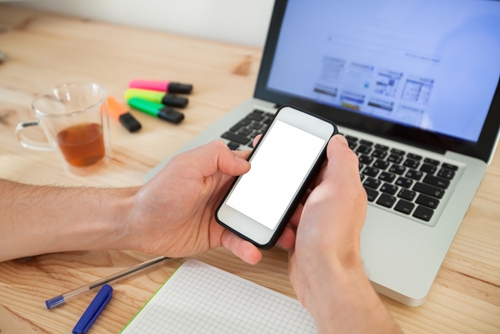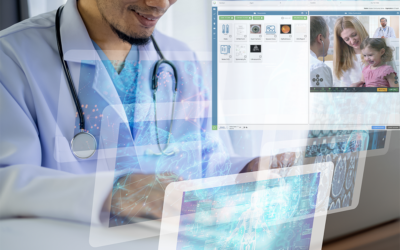We live in the age of the smartphone and it seems almost anything can be accomplished today from the palm of your hand. As Apple’s App Store famously stated during an early advertising campaign, “There’s an app for that.” It only makes sense, then, that telehealth and telemedicine should get the mobile treatment as well.
Some have argued that this focus on mobile technology and healthcare IT has led to a new golden age of healthcare awareness. With the help of apps, consumers can now keep track of their medical data like never before and practitioners are able to talk to patients remotely from their homes via smartphone.
This app revolution is great for consumer convenience, and they certainly have their place in today’s fast-past technology world. However, the recent app revolution may actually be holding back the development of clinical telemedicine. The industry has been around for decades now, but it’s only been fairly recently that policymakers and practitioners have started paying attention to telemedicine on a large scale. Unfortunately the large influx of apps being used for healthcare applications, has caused a negative vibe from legislation and medical boards.
“Telehealth suffers from an embarrassment of riches.”
Water, water everywhere …
Telehealth suffers from an embarrassment of riches. A study published in the Online Journal of Public Health Informatics pointed out that as of 2012, there were over 40,000 healthcare-related apps on the market. These reportedly range from apps tailored to specific specialties or conditions to apps that put patients in contact with care providers, in what the study authors referred to as “healthcare as a medical device.”
The trend doesn’t seem to be slowing down. MobiHealthNews reported multiple startups raising millions of dollars to help fund their new apps, such as those that enable consumers to receive consultations from a physician via text for $15/consult or $50/consult for patients who have a wider range of ailments.
… Nor any drop to drink
Unfortunately, this surfeit of health apps may be more curse than blessing. Physicians have traditionally lambasted this type of healthcare as inferior to in-person consultations or, at best, supplemental to in-person visits. The limits of current smartphone technology present challenges, not least drawing a very small box around the services that can effectively be offered via this method. These services tend to be used for consultations for minor ailments like colds, the flu and acne, but your smartphone can’t do much for you if you have a specialized medical need.
Another major issue is regulation. The healthcare industry is guided by a rigorous set of requirements regarding not just physician licensure, but privacy and confidentiality as well. Navigating both HIPAA and licensure across state lines simultaneously often proves too much for many apps. Worse, there are some startup entrepreneurs who are taking advantage of the relatively unregulated app market for less than savory purposes.
One prominent example recently cited in the news is “telemedicine” being used for doctors to prescribe medicinal marijuana to patients with nothing more than a video conference via smartphone or Skype in the way of vetting.
“Clinical telemedicine empowers doctors to bring the full range of their services to more patients.”
The clinical advantage
Telemedicine has had its reputation somewhat tarnished by this influx of apps and websites that claim to provide healthcare, but offer little in the way of clinical options or medical examinations. Many are simply a platform for patients to talk directly with a doctor about their medical concerns.
Worth noting is that clinical telemedicine requires an existing clinical infrastructure. Nurses or other professionals must still be present with the patient to use the remote medical devices that telemedicine doctors have at their disposal. This guideline helps further cement clinical telemedicine as not just a legitimate part of the industry, but as an ever-growing mainstream majority as well. Additionally, while many apps and services straddle a legal gray area in terms of licensure, clinical telemedicine is receiving a lot of attention from policymakers and even from the Centers for Medicare and Medicaid Services.
Telehealth apps are centered around reducing the physician’s workload by granting the patient more control and autonomy. But clinical telemedicine software and equipment actually empower doctors with additional tools to examine the patients and truly bring the full range of their healthcare services to more people. In fact, in practice there is no difference between the care you could get at a doctor’s office and the care you can receive remotely via clinical telemedicine.
Clinical telemedicine encounter management solutions make real-time remote patient exams possible – a huge step forward in providing accessible healthcare. See how your organization can take advantage of the AGNES Interactive technology to deliver 100% live access to a patient exam site





